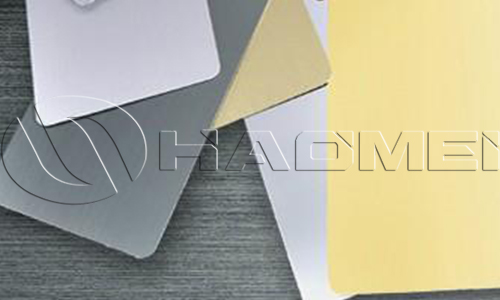Possible disadvantages of anodized aluminum sheet
September 14, 2020
Anodized aluminum sheets are more frequently mentioned with its advantages, and it looks as if there are no disadvantages at all. Yet this is not always the case. Failures in any step of anodising process might lead to the following weaknesses of a pre anodized aluminum sheet.
The first is transparency reduction. Aluminium sheets have their own transparency. The process of anodizing may make the surface of a sheet get dull and eventually lead to lower transparency of the sheet in a whole. It requires strict quality control of raw aluminium sheets and the anodizing process to avoid such a case. In addition, sheets of some alloys tend to get uneven colors after being anodized, like aluminium 3003. If the oxide film is required to be colorless and transparent after oxidation, the 5 and 6 series aluminum plates are better, and they can also be colored after oxidation. If it is only required to be anodized to form a dense anodized film, and if there is no requirement for color, most aluminum plates can be oxidized. Therefore, if you want anodized alu sheets of top quality, you might as well choose better materials like 5005, 5052, 6061 and 7075.

The second is impurity problem. The coloring degree of aluminum alloy products depends largely on the quality of oxide film formation. Therefore, in the sulfuric acid anodizing solution, the influence of impurities on the oxide film cannot be ignored. The impurities are mainly metal ions such as copper, iron, aluminum and organic impurities. Although the content of some metals helps to improve certain properties of anodized aluminium sheets, it may bring about color problems. For example, a slight content of copper improves the mechanical properties of an aluminum sheet, but it makes the sheet surface obviously black. Therefore, if you want black anodized aluminum sheet products, copper impurities do not influence the anodizing effect, otherwise the result would be dissatisfying.
The last are hole sealing problems. Sealing proves to be a critical part for anodizing, and it entails strict control of sealing temperatures, time period, current density, and PH value, impurity level and temperature of the anodizing solution. For instance, powder and cream after sealing may have been caused by high sealing concentration and poor subsequent washing, and uneven current density might lead to low density of the anodized film.
In a word, the anodizing process of aluminum alloy sheets entail professional operation of each step, or else various problems might occur.


 Nydia
Nydia
 Sales Manager
Sales Manager